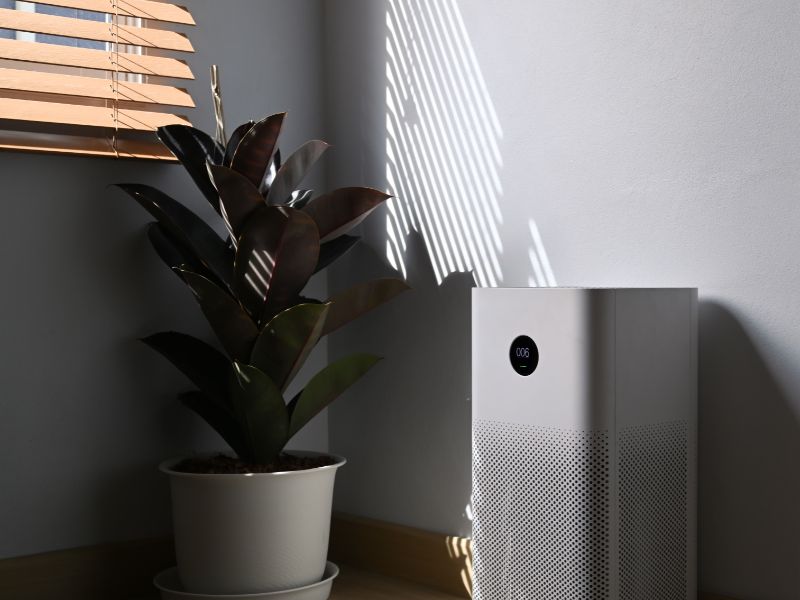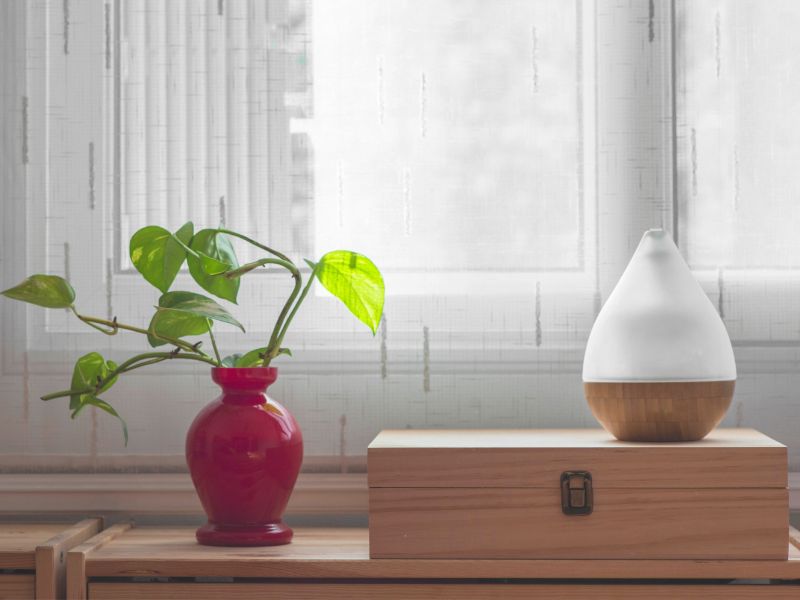We’re all about houseplants! Not only do they beautify our homes, but they’re also nature’s air purifiers. In this article, we’ll delve into the science behind how plants clean our indoor air.
We’ll also share our top picks for air-purifying houseplants and tips on how to maximize their benefits. Let’s explore how we can breathe easier and live healthier with a little help from our leafy friends.
Understanding Indoor Air Pollution
Before we delve into how houseplants enhance air quality, we’ll first need to grasp what indoor air pollution is and why it’s a concern. Indoor air pollution refers to the degradation of indoor air quality by harmful chemicals and other substances; it can be up to 5 times worse than outdoor pollution. Now, why should we worry?
Well, we’re spending about 90% of our time indoors, inhaling potentially harmful pollutants. These pollutants can originate from a wide range of sources such as furniture, carpets, building materials, cleaning products, or even our own activities like cooking.
They can pose serious health risks including respiratory issues, allergies, and even long-term effects like cancer. That’s why it’s crucial to tackle indoor air pollution.
The Role of Houseplants in Air Purification
Now that we’ve got a handle on indoor air pollution, let’s dive into the role houseplants play in air purification, a surprisingly effective and natural solution. Houseplants, through the process of photosynthesis, absorb carbon dioxide and release oxygen. But that’s not all. They can also absorb harmful toxins and pollutants from the air.
This can include volatile organic compounds (VOCs) emitted from products we use daily, like cleaning supplies, cosmetics, and electronics. Some houseplants are particularly good at this, such as spider plants, snake plants, and peace lilies. It’s not just about aesthetics, folks.
These green companions are hard at work improving our indoor air quality, making our homes healthier and more comfortable.

Top Air-Purifying Houseplants
Let’s delve into the top air-purifying houseplants that aren’t only attractive but also heroes in enhancing our indoor air quality. The Spider Plant tops our list with its ability to absorb carbon monoxide, a common indoor pollutant. Next, we’ve got the Snake Plant, which not only purifies air by removing toxins but also releases oxygen at night, making it perfect for bedrooms.
The Bamboo Palm is another powerhouse, removing formaldehyde and acting as a natural humidifier. The Peace Lily, with its beautiful blooms, effectively cleans the air of toxins like benzene and ammonia.
Lastly, we can’t forget the Aloe Vera, which removes formaldehyde and benzene, and also doubles as a handy plant for minor burns.
The Scientific Process Behind Plant Filtration
While we’ve discussed the top air-purifying houseplants, it’s equally important to understand the scientific process behind how these plants filter and improve our indoor air quality. Essentially, plants act as natural air purifiers through a process called phytoremediation.
They absorb harmful gases through the pores on their leaves, then break down these pollutants into substances they can use for growth. Additionally, the microorganisms living in the plant’s soil also play a significant role in air purification.
They degrade and neutralize toxins, effectively creating cleaner air. Understanding this process helps us appreciate not only the beauty these houseplants bring into our homes but also the silent, crucial work they’re doing to make our living spaces healthier.

Tips for Maximizing Houseplants Air-Quality Benefits
To get the most out of our houseplants’ air-purifying abilities, we’ll need to follow a few specific care practices.
Firstly, we’ll want to ensure they’re receiving the right amount of light. Too little and they’ll struggle to photosynthesize, reducing their air-cleaning capacity. Also, overwatering can lead to root rot, hurting their overall health and ability to filter the air.
We should avoid using harsh chemical fertilizers, as plants can absorb these and release them back into the air. Instead, opt for organic alternatives. Regularly dusting plant leaves can also help maintain their air-purifying efficiency.
Lastly, the more plants we have, the better. A variety of species is best, as different plants can remove different pollutants. That’s how we maximize our houseplants’ air-quality benefits.
We’ve discovered how incredible houseplants
Are at purifying our indoor air. They’re not just pretty to look at, they’re hard at work removing pollutants and improving our overall air quality.
With the right selection and care, we can maximize these benefits. Let’s bring more green into our living spaces and breathe easier, knowing we’re making a healthier environment for ourselves. Truly, houseplants are nature’s own air purifiers!






